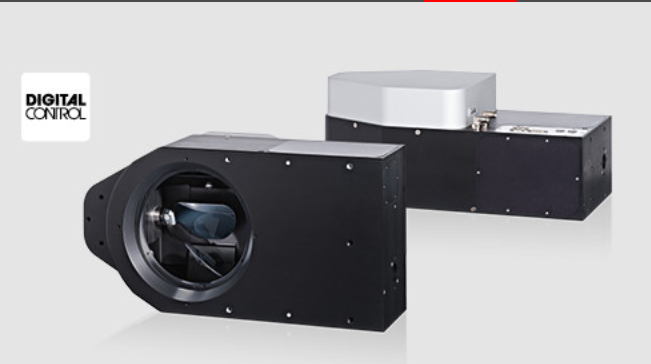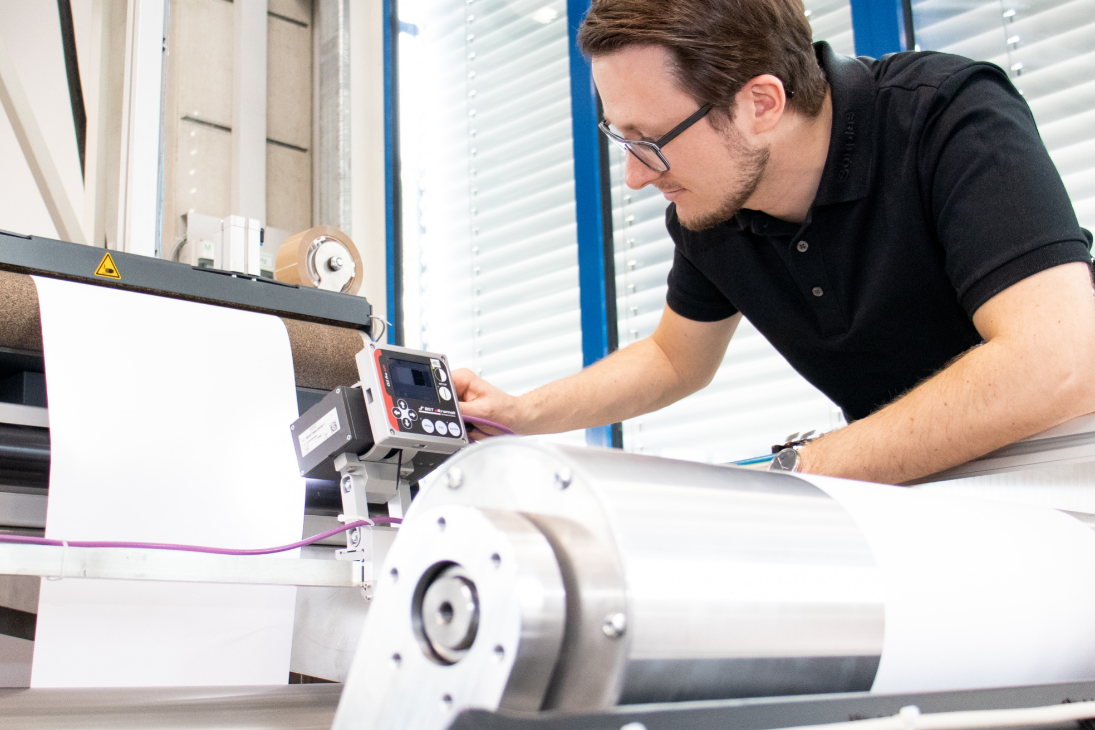Laser deflection units deliver peak performance in cutting electrode foils
In light of the increasing number of vehicle and battery system recalls in the electromobility sector, German machine manufacturers are placing renewed focus on quality to give the market new impetus. The aim: to achieve improved cutting edges in the electrode production for battery cells and to offer outstanding “Made in Germany” quality in the face of international competition, particularly from the powerful Asian markets. Unfortunately, manufacturing methods and standards currently used in cell factories for lithium-ion battery foils are not yet up to automotive industry standards. However, improved quality overall depends on the quality and lifetime of each individual cell. Achieving this is in the car makers’ interests, so e-car recalls could soon be a thing of the past. Modern laser technology with its highly innovative scanners is making this possible. These urgently needed quality standards for the automotive sector are currently being created in cooperation with enterprising machine builders. Together, they are helping to ensure the necessary rapid ramp-up of cell factories.
Optimum laser cutting on electrode foils
There are currently three cell formats being used in the production of lithium-ion batteries in electromobility: the pouch cell, the cylindrical cell and the prismatic cell.
Regardless of cell type, the smallest unit of each lithium-ion cell consists of two coated foils – the electrodes. One is a copper foil for the anode and the other is a coated aluminium foil for the cathode. In electrode production, these carrier foils are coated with electrode material on large mother rolls. They are then separated onto daughter rolls to achieve the required cell format. The next step is to trim the edges of the daughter rolls or cut out the individual electrode sheets. It is here that modern laser systems offer clear benefits. A laser deflection unit can be used to deliver a high-quality cut on the coating, and also to generate the respective electrode foils quickly and precisely using contour cutting. Florian Thalhofer, Development Engineer at Sonplas: “We are particularly focused on pouch cells at the moment, as they can be used to achieve the highest energy density in e-cars.”
Speed, cleanliness and flexibility are key
To increase productivity, battery foils are usually cut and the individual electrodes of pouch cells generated, while the daughter roll is running. But there are enormous technical problems to be solved. Florian Thalhofer knows the difficulties only too well: “The real problem lies in the combination of challenges. We have a very high cutting speed of over 1 metre per second and we cannot let the electrodes get contaminated in the process. Particularly the particles larger than 10 µm. Otherwise, the separator film can easily get punctured. Also, we need a system to process different geometries without having to modify the machinery, for example the largest electrodes on the market in the 700 x 700 mm scan field.” A highly complex process that requires the highest precision at maximum speed yet needs to be adaptable at the same time. A task well suited to modern laser cutting systems.

The AXIALSCAN II-50 from RAYLASE can produce an outstandingly small laser spot diameter even in large process fields with its mirrors for 50 mm beam size. This makes a very clean and straight cut edge in the electrode foil with no burnback. The particularly light but rigid deflection mirrors also enable a high level of dynamics. Even 90° changes of direction can be achieved when cutting the foils precisely, without welding beads, and without burr formation or burnback.
Wear-free, accurate positioning at unsurpassed speed
Using the appropriate software and carefully calculating path speed, laser deflection units can cut the electrode with positional accuracy at outstanding speed. They also take into account the most recent increase in thickness, from 100 to over 200 µm, and thus the mechanical sensitivity of the electrodes. Because the thicker the electrode the more difficult it is to cut. “Our AXIALSCAN-II 50 deflection unit offers precisely the high-quality process that brings enormous benefits compared to mechanical punching tools. Because it is contactless and therefore wear-free, the laser is also a lower-cost solution in the long term,” emphasises Wolfgang Lehmann, Product Manager at RAYLASE.
Laser beam deflection units score points on quality
The Straubing-based special machine builder Sonplas GmbH is working in close cooperation with RAYLASE to improve the quality of cut edges in electrode foils. The Bavarian company with more than 300 employees has been developing, building and supplying customised, innovative testing and assembly systems for the automotive industry, automotive suppliers, and the electronics and aerospace industries for almost three decades. Since 2020, Sonplas has focused on the topic of “batteries” and particularly on “cell production quality”, as automotive standards are significantly higher than those in the consumer sector. Florian Thalhofer, R&D engineer at Sonplas: “Among other things, it was important to us to reduce the HAZ (heat affected zone), that is, the heat input zone, on the material. During cutting, there should also be no burnback and no burr formation. And we also want to reduce the size and number of particles.” Using the laser scanner here achieves a very good imaging ratio or a very large working field with a simultaneously small laser spot size. This provides maximum flexibility, especially in terms of geometry and electrode size. Implementing the AXIALSCAN II-50 laser deflection unit from RAYLASE has helped moved Sonplas forward: “The better cut in the electrode foils means we can increase the service life of battery cells,” says Paul Birkeneder, Sales Manager at Sonplas. The company is currently working on defining and optimising quality criteria metrics, in other words, a procedure for the general assessment of electrode cut quality. This progress will soon be made visible to customers in a demo plant.
By combining the expertise from the two researching companies; Sonplas in special machine construction and Raylase with their innovative laser deflection units, it is now possible to achieve a high-quality laser cut on the electrode foils to be separated. This not only supports the highly dynamic growth of battery production currently being seen in Europe, and Germany in particular, but also makes great sense ecologically. Because better quality helps to reduce the present high reject rates in foil production. This is exactly what premium brand car makers have been waiting for.
About RAYLASE
RAYLASE GmbH is a highly innovative, international laser company based in Wessling near Munich. Founded in 1999, the Bavarian company offers high-precision opto-mechanical components, control cards and software for the rapid deflection and modulation of laser beams for laser material processing in industrial manufacturing. With over 130 employees worldwide, the RAYLASE Group stands for innovative technology of the highest quality. Since 2007, the company has a subsidiary and its own production facility in Shenzhen, China, as well as several international representatives in the US, Italy, Japan, Korea, and Taiwan.
The laser deflection units comprise opto-mechanical scanners and digital control electronics with an intuitive software interface. These form the core of industrial laser systems and enable more flexible, economical, and precise processing of a wide variety of materials such as metal, plastic, paper, textiles and many more. Opto-mechanical deflection units also offer excellent image processing for better calibration, simple automation, and exact monitoring of a range of laser processes.
Customers come from the electronic, automotive, photovoltaic, textile and packaging industries. RAYLASE’s current focus markets are electromobility, for example, in battery production, solar wafer production for photovoltaics in the solar industry and additive manufacturing. RAYLASE supports its customers primarily in four core applications: laser cutting, laser welding, laser surface processing and selective laser sintering or welding for additive manufacturing. In each of these areas, the company drives digital innovations by combining these with established technologies.

